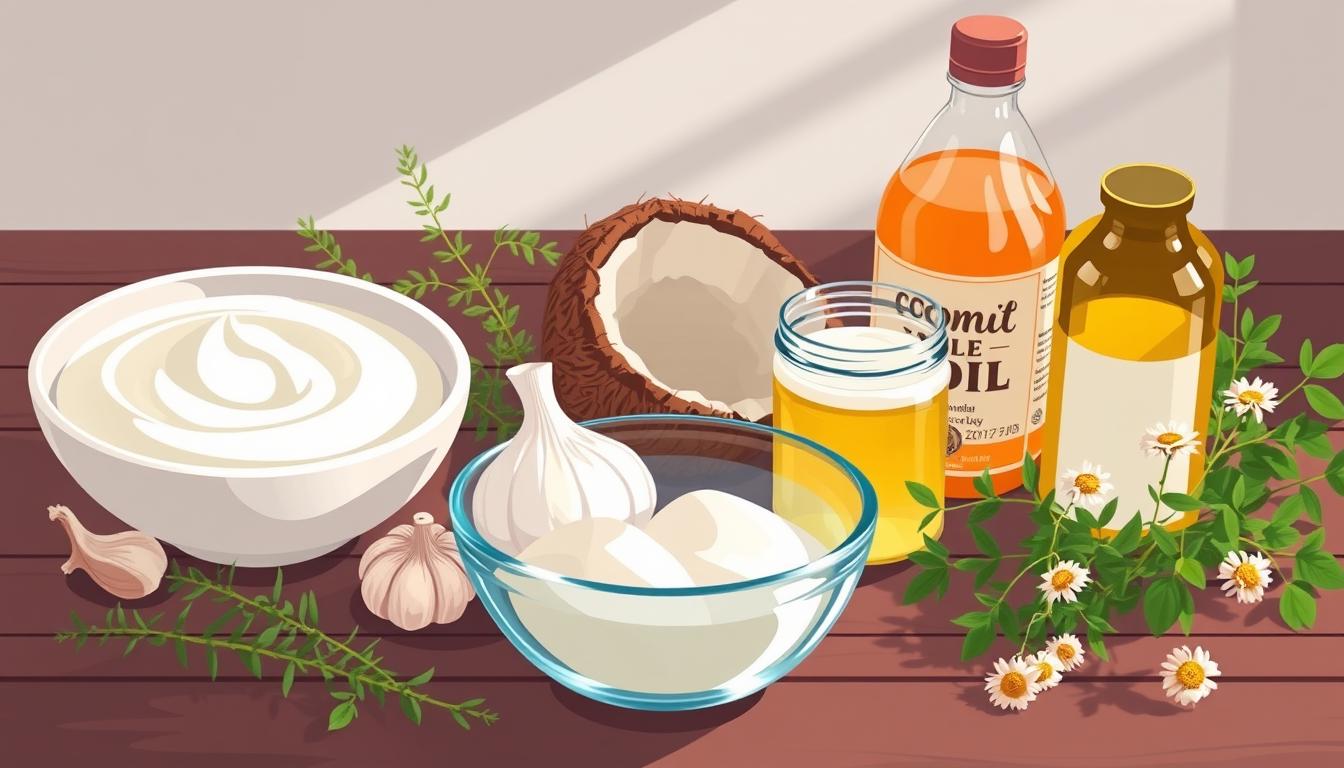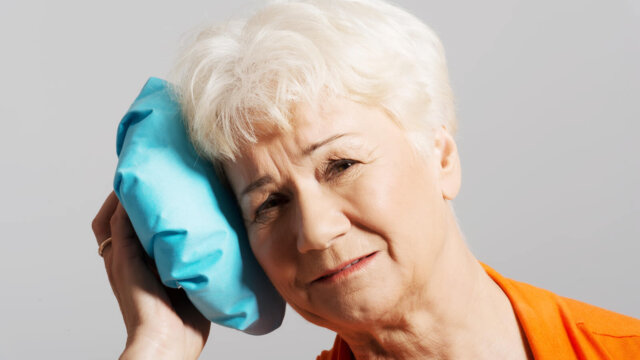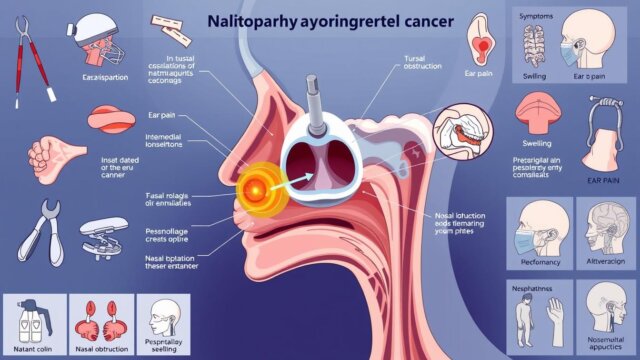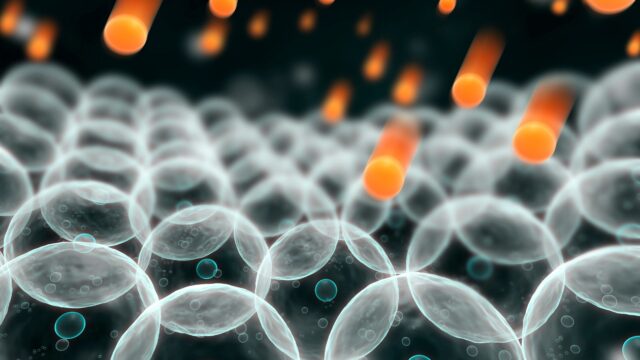FTC disclaimer: This post may contains affiliate links and we will be compensated if you click on a link and make a purchase.
Nearly75% of women get at least one yeast infection in their life. Most people with a vulva and vagina get a yeast infection at some time. While medicines are the best treatment, there are natural home remedies that can help with symptoms.
Key Takeaways
- Yeast infections are caused by too much Candida albicans fungus
- Natural home remedies like yogurt, boric acid, and essential oils may offer symptom relief
- Speak with a healthcare provider, especially for recurrent or severe infections
- Certain home remedies like garlic and hydrogen peroxide should be used with caution
- Probiotics, coconut oil, and apple cider vinegar may help rebalance the vaginal microbiome
What is a Vaginal Yeast Infection?
A vaginal yeast infection is caused by too much Candida fungus in the vagina. It happens in people with vaginas. Symptoms include white or yellowish discharge, itching, and burning during sex or urination.
Symptoms of a Yeast Infection
The main signs of a vaginal yeast infection are:
- Vaginal itching or irritation
- Thick, white, clumpy vaginal discharge that resembles cottage cheese
- Redness and swelling of the vulva
- Burning sensation during intercourse or when urinating
How to Diagnose a Yeast Infection
To find out if you have a yeast infection, a doctor will do a pelvic exam. They will also take a sample of your vaginal discharge for testing. This helps confirm the infection and rule out other conditions.
Probiotics can help keep the good bacteria in your body to prevent yeast infections. Eating yogurt with live cultures can also help. Antifungal medicines are the best treatment for yeast infections.
About 75% of women will get a yeast infection at some point. Over half will have two or more infections in their lifetime. Yeast infections are a common cause of vaginitis.
Blostein et al. studied recurrent vulvovaginal candidiasis in the Annals of Epidemiology 2017. Treatment options include short-course vaginal therapy and single-dose oral medication.
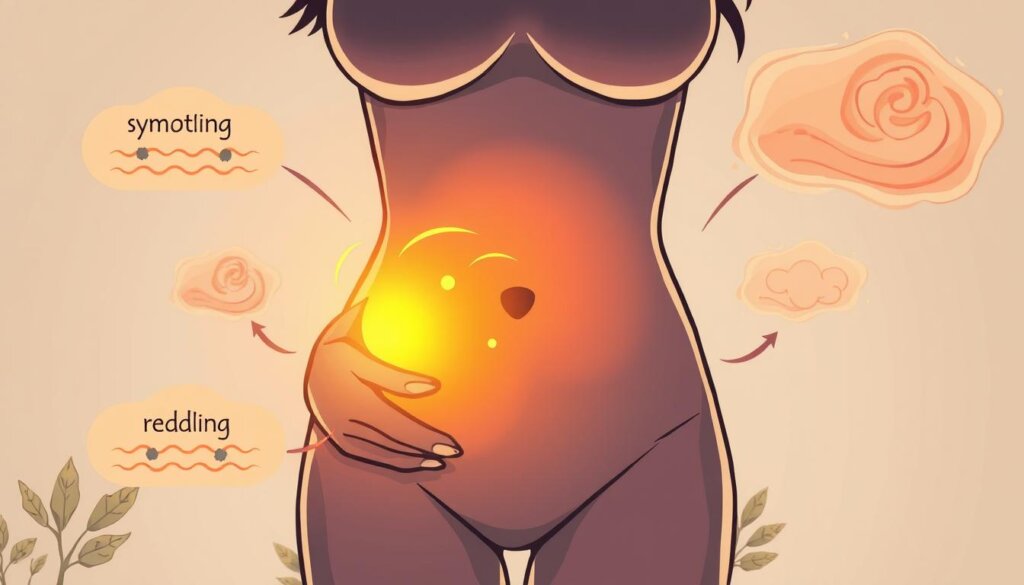
Alternative medicine is not proven to treat vaginal yeast infections. It’s important to talk to a healthcare provider about any alternative treatments. Mayo Clinic offers clinical trials for new treatments.
To prepare for a doctor’s appointment, make a list of symptoms and medical information. Your doctor will ask questions about your symptoms, past treatments, and more.
Wearing cotton panties and avoiding tight clothes can help prevent yeast infections.
Greek Yogurt
Probiotic yogurt, especially Greek yogurt, can help with vaginal yeast infections. The live cultures in plain, unsweetened Greek yogurt can balance bacteria in the vagina. This helps reduce Candida, the fungus that causes yeast infections.
A mix of yogurt and honey is better than antifungal creams for pregnant women. It has a 87.8% cure rate, compared to 72.3% for creams. A 2015 study also showed yogurt and honey are better than clotrimazole cream.
You can eat yogurt or use it topically around the vagina. Or, you can insert it vaginally with a clean tampon applicator. Use yogurt for about seven days until symptoms go away. But, talk to your doctor before using it for diaper rash in kids, as there’s no research.
The probiotics in yogurt, like Lactobacillus, can prevent future yeast infections. They keep the vagina’s bacteria balanced. Oral probiotics can also treat yeast infections and bacterial vaginosis.

In summary, probiotic yogurt, especially Greek yogurt, is a safe and effective remedy for yeast infections.
Boric Acid
Boric acid is a natural compound used to treat yeast infections at home. It works better than over-the-counter treatments for some cases. Studies show it can cure yeast infections 40% to 100% of the time. It also doesn’t increase the chance of the infection coming back.
Precautions with Boric Acid
Even though boric acid is effective, it’s dangerous if not used carefully. It can harm the kidneys and even cause death if too much is taken in. Pregnant women and those taking it by mouth should avoid it. Stop using it if you feel any discomfort or side effects.
Brands like AZO Boric Acid with Aloe Vera and Hylafem sell boric acid suppositories. It’s not safe for kids. Side effects like vaginal discharge are common but usually not serious.
A 2019 study showed boric acid suppositories work well with few side effects. A 2003 study found no big difference in results with longer treatment. If boric acid doesn’t work, doctors might suggest topical flucytosine, which helped 90% of women in one study.
Boric acid should clear up a yeast infection in 1 to 2 weeks. Symptoms should start to get better in a few days. Some doctors even suggest using it preventively to stop future infections.

Essential Oil of Oregano
Oil of oregano comes from the wild oregano plant (Origanum vulgare). It’s a strong natural remedy for yeast infections. It has thymol and carvacrol, which stop Candida albicans fungus growth.
To use it, mix 3-5 drops with olive or coconut oil. Then, apply it to the affected area. You can also use a diffuser to inhale its vapors. But, never swallow essential oils.
Before using oregano oil, talk to your doctor. This is especially true if you’re pregnant, breastfeeding, or have health issues. It’s important to use it safely to avoid skin problems.
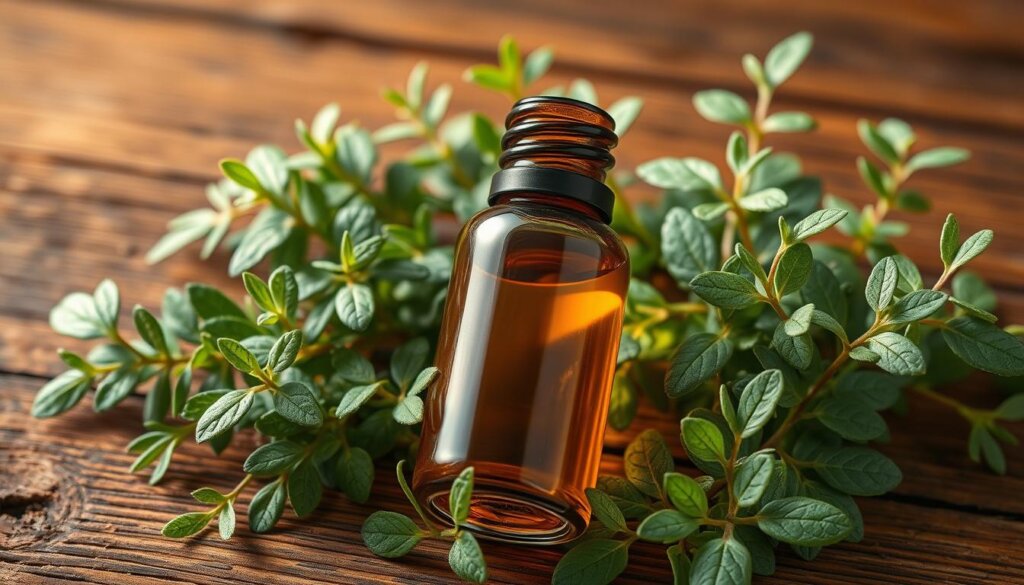
Using oregano oil with other treatments like Greek yogurt and probiotics can help. But, if your symptoms don’t get better or get worse, see a doctor.
Probiotic Suppositories and Supplements
Dealing with a yeast infection can be uncomfortable. Probiotic suppositories and supplements might help. They contain Lactobacillus acidophilus bacteria. This can balance bacteria and yeast in your body, including your vagina.
Oral probiotics can help over time. But probiotic suppositories might give you quick relief from symptoms.
Studies show probiotic suppositories can also fight bacterial vaginosis. This is a common vaginal infection. Boric acid was once used in suppositories for infections.
Oral probiotics take about 10 days to work. But vaginal suppositories can act faster.
Benefits of Probiotic Supplements | Benefits of Probiotic Suppositories |
|---|---|
|
|
Eating probiotic-rich foods and taking supplements can help fight yeast infections. Talk to your doctor to find what’s best for you.
Coconut Oil
Coconut oil is a natural way to fight yeast infections. It has strong antifungal powers that can beat Candida albicans yeast. This yeast is the main cause of most vaginal yeast infections.
Coconut oil might even work better than usual medicines against this fungus.
Coconut oil’s power comes from its fatty acids, like caprylic acid. This acid stops Candida yeast from growing. Some studies say coconut oil works as well as ketoconazole, a common yeast treatment.
Coconut oil is great because you can put it right on the problem area. Women often use it on their vulva and vagina to feel better and fight the fungus. It can also mix with other oils to make it even more helpful.
But, coconut oil might not work the same for everyone. We need more studies to know how it works long-term. People with tree nut allergies should talk to their doctor before trying it.
In short, coconut oil is a good natural choice for yeast infections. But, it’s important to be careful and talk to a doctor, especially if you keep getting infections. With the right advice, coconut oil could be a gentle and effective way to treat yeast infections.
Home Remedies for Yeast Infection
Yeast infections can be a big problem for many women. Some people like to try natural remedies first. These include tea tree oil, apple cider vinegar, garlic, and hydrogen peroxide.
Tea tree oil can fight off fungus and might help with yeast infections. Apple cider vinegar’s acidity can make it hard for Candida to grow. Garlic has antimicrobial properties, but it’s not good to use as a vaginal suppository. Hydrogen peroxide, when diluted, can help clean and ease symptoms.
Even though some home remedies work, it’s smart to talk to a doctor, especially for bad or ongoing infections. Getting the right diagnosis and treatment is key. Untreated yeast infections can cause bigger problems.
How well these remedies work can differ. It’s important to think about the good and bad sides. Always talk to a doctor for advice on yeast infections. This way, you can find the best way to treat your infection and feel better.
Tea Tree Oil
Tea tree oil is a natural oil with strong antifungal and antimicrobial powers. It may help fight vaginal yeast infections. Candida albicans is the main cause of these infections, and tea tree oil can fight it well.
It works best when mixed with medicines like fluconazole.
Using Tea Tree Oil Safely
Tea tree oil is helpful but must be used right. It comes in suppositories for six days of treatment. You can find these at drug stores or online.
Use one suppository a day for up to six days. Insert it before bed.
Tea tree oil is very strong. Always mix it with a carrier oil before skin use. Undiluted tea tree oil can cause irritation. Never eat it.
Side effects might include irritation or discomfort. Serious side effects from eating it include vomiting, muscle loss, and coma.
Choose prepared suppositories and stop if you feel any discomfort. The FDA doesn’t check essential oil quality. Always talk to a doctor before using them.
Tea tree oil can be a good natural remedy. But, it’s key to use it safely to avoid irritation or bad effects. Always mix it with a carrier oil before skin use. Never eat it. Always get advice from a doctor before using it for a yeast infection.
Apple Cider Vinegar
Apple cider vinegar (ACV) is known as a natural cure for yeast infections. It’s acidic and can kill harmful yeast in the vagina.
To use ACV, mix half a cup with warm water in a bathtub. Soak for 20 minutes. This helps balance the vagina’s pH and stops yeast from growing.
But, don’t confuse ACV with douching. Douching can upset the vagina’s natural balance and cause more infections. Always mix ACV with water to avoid skin irritation.
ACV has shown to fight bacteria and fungi. Yet, there’s not much science backing its use for yeast infections. If symptoms last more than a week, see a doctor. Yeast infections can be like other issues.
Using ACV is just one part of the solution. Keep clean, wear breathable clothes, and avoid tight clothes to fight yeast infections. Always watch for any bad reactions when trying ACV for yeast relief.
Garlic
Garlic is known for its health benefits, including fighting vaginal yeast infections. Studies show it can slow down Candida albicans growth, the yeast causing these infections. A 2006 study found garlic effective against 18 Candida strains.
Warnings About Using Garlic
Garlic can be helpful, but use it with care for yeast infections. Inserting garlic into the vagina is not safe, as it can burn and hurt. A 2010 study in Iran showed garlic cream was no better than clotrimazole.
Eating garlic might be safer, as some studies suggest it could treat yeast infections. But, it can cause bad breath, body odor, and stomach issues. Applying garlic topically can lead to itching, discharge, and other problems.
Even though garlic might help, talk to a doctor before using it for yeast infections. They can give you safe, effective treatments.
Hydrogen Peroxide
Hydrogen peroxide can kill bacteria and yeast. Some people use it on their skin to fight yeast infections. But, there’s not much research on its use for vaginal infections.
It’s not safe to use hydrogen peroxide inside the body. It might not work on all yeast and could irritate your skin.
Hydrogen peroxide is good for cleaning. But for yeast infections, you should use medicines from the store or your doctor. Home remedies like hydrogen peroxide might not cure the infection.
If you have a yeast infection, you need to see a doctor. Using hydrogen peroxide without a doctor’s advice can make things worse. Your doctor will tell you the best way to treat it.
Hydrogen peroxide is not the best choice for treating yeast infections. Always talk to your doctor for the right treatment.
Vitamin C
Vitamin C is a strong antioxidant and boosts your immune system. It might help fight Vitamin C for Yeast Infections. Some studies show it can help your body fight the Candida fungus that causes yeast infections.
But, don’t put vitamin C on your vagina. It’s too acidic and can irritate it. Eat more foods high in vitamin C like citrus fruits, bell peppers, broccoli, and strawberries.
Taking vitamin C supplements can also boost your immune system. This is key in fighting off yeast infections. Always talk to your doctor before starting any new supplements, especially if you have health issues.
“Vitamin C is an essential nutrient for maintaining a healthy immune system, which is crucial in fighting off yeast infections.”
In summary, vitamin C is not a direct cure for yeast infections. But, it can help your treatment plan. Eating more vitamin C foods or taking supplements can support your body’s defense against Candida. Always work with your doctor to find the best and safest treatment for you.
Vitamin E
If you’re dealing with a long-lasting vaginal yeast infection, vitamin E might help. It has anti-inflammatory properties that fight the fungus causing yeast infections. Using vitamin E suppositories or oils can also help with vaginal atrophy, making infections less likely.
By putting vitamin E on your vulva or vagina, you can ease itching and burning. This makes you feel better when you have a yeast infection.
Studies show vitamin E can treat some vaginal inflammation. It fights the fungus that causes yeast infections. Eating probiotic-rich foods like yogurt also helps keep Candida in check. This supports good bacteria in your vagina.
But remember, home remedies like vitamin E might not solve the problem forever. They can sometimes irritate your skin or upset your vagina’s balance. If you keep getting yeast infections, see a doctor for better treatment.
In short, vitamin E can be a natural way to fight yeast infection symptoms. But always watch how your body reacts to it. This ensures it’s safe and works for you.
When to Avoid Home Remedies
Home remedies can help with mild yeast infections. But, there are times when you should see a doctor instead. Pregnant women, people with STIs, and those with severe yeast infections should not try to treat it at home.
Home remedies might not work for all yeast infections. If your symptoms don’t get better or get worse, you need to see a doctor. Trying to treat it yourself can make things worse and delay getting the right treatment.
- Pregnant women should not use home remedies for yeast infections, as some ingredients could potentially harm the developing fetus.
- People with a sexually transmitted infection (STI) should avoid home remedies, as the symptoms may be mistaken for a yeast infection when a different condition is present.
- Individuals with recurrent or severe yeast infections often require prescription antifungal medication or other targeted treatment, which cannot be adequately replicated at home.
Home remedies can be a good and cheap way to handle mild yeast infections. But, knowing when to see a doctor is key. Not using home remedies in some cases can stop the infection from getting worse or causing more serious problems.
Recent studies show home remedies might not work as well as doctor’s treatments. A study found boric acid suppository capsules cured 92% of vaginal yeast infections. A boric acid gel cured 81% of cases. Also, Lactobacillus strains helped with bacterial vaginosis but not yeast infections.
Always talk to a healthcare provider, especially if you keep getting yeast infections or home remedies don’t work. They can give you the right diagnosis and treatment. This might include antifungal medicines or other special treatments.
Conclusion
Natural home remedies for yeast infection relief can help manage this common problem. Vaginal yeast infections cause itching, burning, and odd discharge. Home remedies like Greek yogurt, boric acid, and essential oils can help balance your vaginal pH.
These remedies can stop harmful fungi like Candida from growing. But, be careful with home remedies, especially if you’re new to infections or if they keep coming back. Always see a doctor for the right treatment.
Using both natural remedies and medical care can help you feel better. This way, you can keep your vaginal area healthy and happy.
Remember, natural home remedies for yeast infection relief are great, but talk to your doctor first. The right mix of natural and medical help can lead to lasting relief and better health.
FAQ
What is a vaginal yeast infection?
A vaginal yeast infection is caused by too much Candida fungus in the vagina. It can make you feel itchy, burn when you pee or have sex, and make your vagina red and swollen. You might also see white or yellowish discharge.
What are the symptoms of a yeast infection?
You might notice white or yellowish discharge. Itching, burning when you pee or have sex, and redness or swelling around your vagina are also signs.
How is a yeast infection diagnosed?
A healthcare provider will do a pelvic exam and take a sample of your vaginal discharge. This helps confirm the infection and rule out other conditions.
How can Greek yogurt help treat a yeast infection?
Eating plain, unsweetened Greek yogurt with live cultures can help. The probiotics in it, like Lactobacillus acidophilus, help balance your vagina’s bacteria. This can reduce Candida overgrowth.
What are the precautions with using boric acid for yeast infections?
Some people use boric acid to treat yeast infections. But it’s toxic in large amounts and can harm your kidneys and circulatory system. Pregnant women should avoid it. Stop using it if you feel any discomfort.
How can oregano oil help with a yeast infection?
Oil of oregano has compounds like thymol and carvacrol that fight Candida albicans. Research shows it can change the growth of this yeast.
How can probiotic supplements and suppositories help with yeast infections?
Probiotic supplements with Lactobacillus acidophilus can balance your body’s bacteria and yeast. Oral probiotics help over time. Probiotic suppositories can give quicker relief.
How can coconut oil help treat a yeast infection?
Coconut oil’s antifungal properties fight Candida albicans. Use pure, organic coconut oil on the affected area to treat a yeast infection.
What other home remedies can be used for yeast infections?
You can try tea tree oil, apple cider vinegar, garlic, and hydrogen peroxide. But always dilute them first and use them carefully.
How should tea tree oil be used safely for yeast infections?
Tea tree oil is strong and should be diluted before use. It’s good for fighting yeast infections but can irritate skin. Never use it undiluted or ingest it.
How can apple cider vinegar help with a yeast infection?
An apple cider vinegar bath may help by killing harmful microorganisms. Add half a cup to a lukewarm bath and soak for 20 minutes.
What are the warnings about using garlic for yeast infections?
Garlic can fight Candida albicans. But don’t insert garlic into your vagina. It can burn and hurt your delicate tissues.
Can hydrogen peroxide help treat a yeast infection?
Hydrogen peroxide kills bacteria and yeast. Some use it topically for yeast infections. But there’s little research on its effectiveness for vaginal infections. Avoid using it internally.
How can vitamin C help with a yeast infection?
Vitamin C boosts your immune system and fights Candida. Eating more vitamin C can help fight the infection. But don’t apply it directly to your vagina because it’s acidic.
How can vitamin E help with a yeast infection?
Vitamin E may reduce inflammation caused by Candida. Some doctors recommend it for vaginal inflammation. Vitamin E suppositories can also help with vaginal atrophy.
When should home remedies be avoided for yeast infections?
Pregnant women, those with STIs, and people with severe yeast infections should see a doctor. Home remedies might not work for all infections. Medical help is needed if symptoms don’t get better or worsen.
